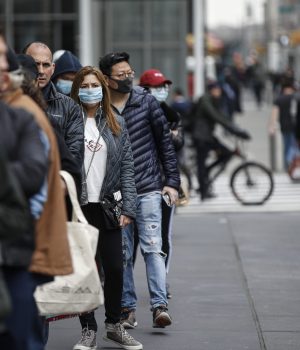
The world has been plunged into turmoil in the three months since China first came across a new Coronavirus.
Here is a look back at the dramatic first months of 2020:
A first virus death is announced on January 11 in China and the epidemic spreads across provinces, and then beyond the borders of the mainland.
France is the first country to report a case in Europe, at the end of January. The early infections are found in people either from China or who have recently returned from there.
In the hope of slowing the spread of the epidemic, Chinese authorities take the radical step of confinement, first locking down the city of Wuhan and then, on January 25, the whole of Hubei province, cutting off its 56 million people from the rest of the world.
Other countries begin repatriating their citizens and putting them under quarantine on arrival home.
At the end of January, with almost 6,000 cases officially recorded in mainland China, the number of infections from the new Coronavirus overtakes that of SARS.
Thousands of people are stuck on several cruise liners after cases are detected on board. More than 3,700 are quarantined from February 5 on a ship off Japan’s coast and more than 700 infections emerge among the passengers and crew in a few weeks.
Although much remains unknown about the new Coronavirus, the disease gets a new name: “COVID-19”.
Around the world concerns are raised about the economic repercussions, as international meetings and sports competitions are progressively cancelled.
By the end of February, the number of infections is rising, notably in Italy, South Korea and Iran. Chinese authorities believe the epidemic is reaching a peak on the mainland.
On March 6, the number of reported cases worldwide tops 100,000.
Hard-hit Italy is the first country after China to impose strict confinement measures on its population.
On March 11, the WHO declares COVID-19 a “pandemic” and urges the world to take action.
The US begins sealing its borders to foreign visitors from Europe.
World stock markets register historic losses while governments and central banks announce massive aid packages.
Widespread panic causes stockpiling and long queues at supermarkets.
The WHO declares Europe the new virus epicenter and through the month of March, Spain, France and Britain impose their own confinement measures.
Several countries worldwide follow with various forms of lockdown, while the number of deaths continues to rise and overstretched hospitals struggle to cope.
By April 2, half of the world’s population is called on or obliged by their authorities to stay at home. Flights are grounded, schools and universities are shuttered, and working from home is the new norm.
Most countries experience shortages of masks and other protective medical equipment, sparking competition for resources.
There are worries too of intensive care units being overcrowded, and shortages of drugs and medical staff.
While most of those infected with the virus recover, the illness can cause serious pulmonary complications, even in young patients.
Children had been considered safe from the more serious conditions, but rare cases of adolescent deaths in France, Belgium and Britain spark concern. Two babies die from COVID-19 in the US.
Retirement homes are hit hard as the virus sweeps through.
The Coronavirus pandemic is the worst global crisis since World War II, the UN says at the end of March. It could trigger conflicts around the world and an economic recession “that probably has no parallel in the recent past”.
World powers promise billions of dollars to restart the world economy, which has been mostly brought to a standstill, while unemployment claims in the US soar to new records.
A quarter of global infections are in the US.
At the start of April, as the world toll tops more than a million infections and 60,000 dead, questions are raised over what will come next.









































